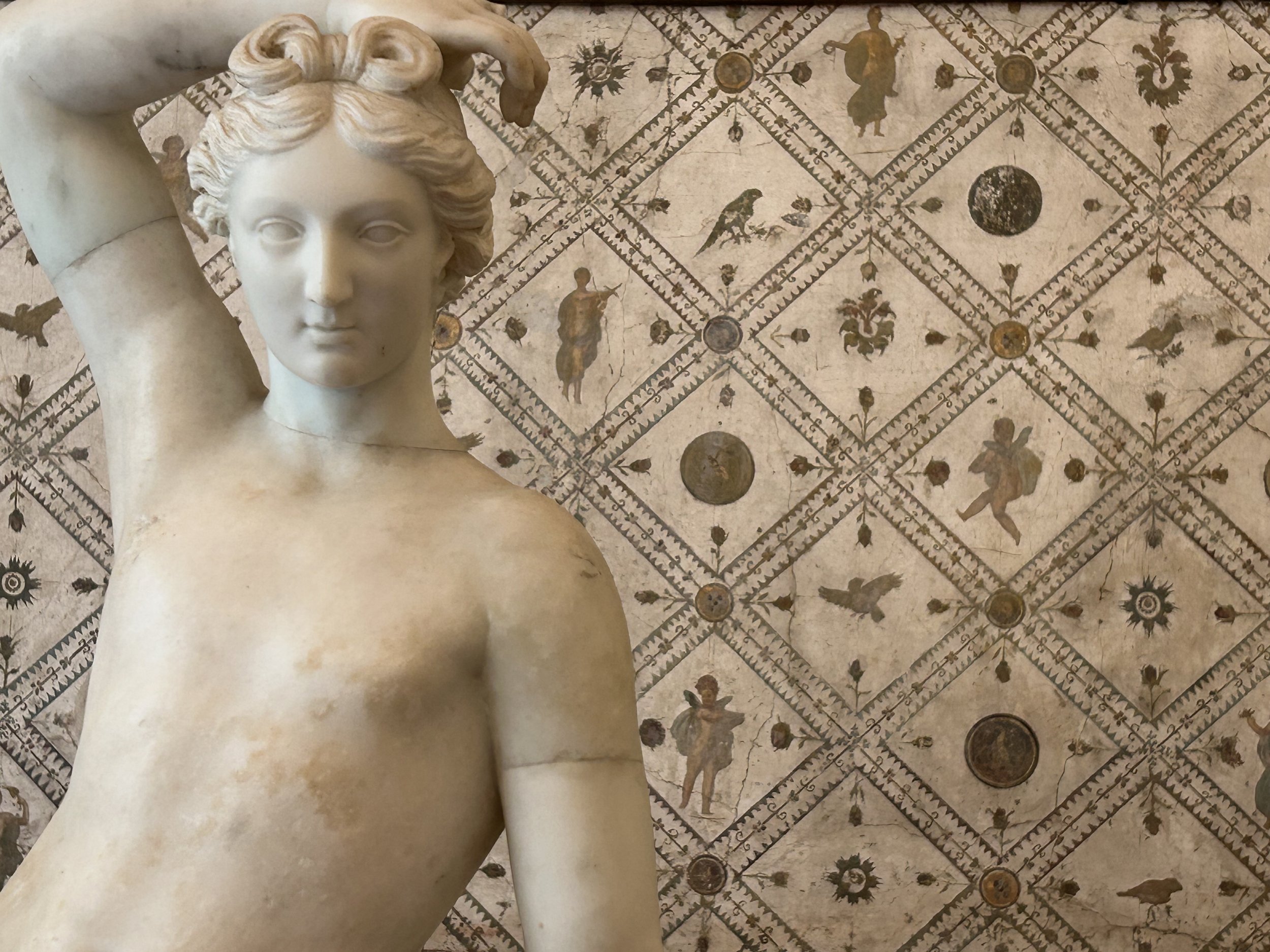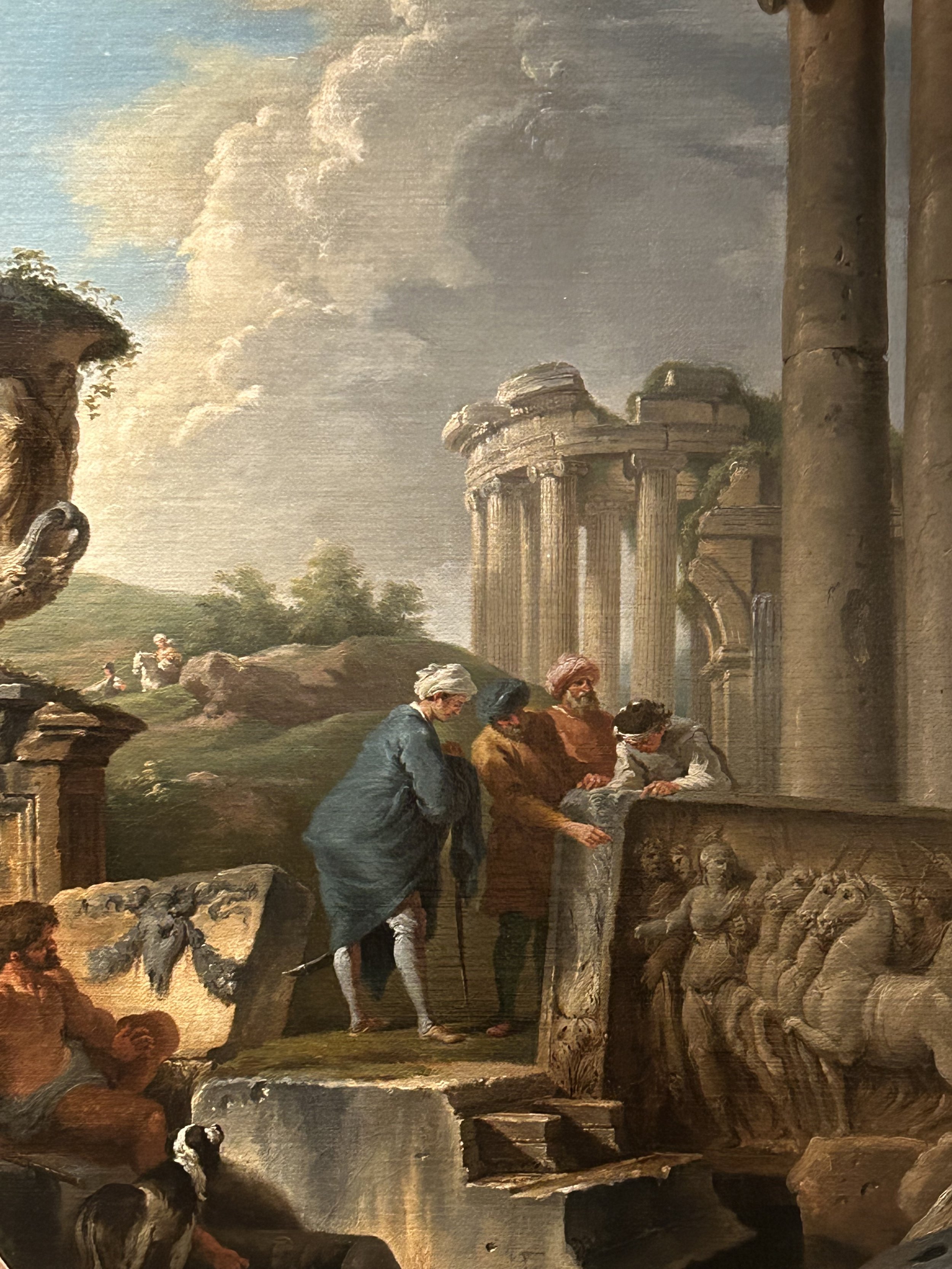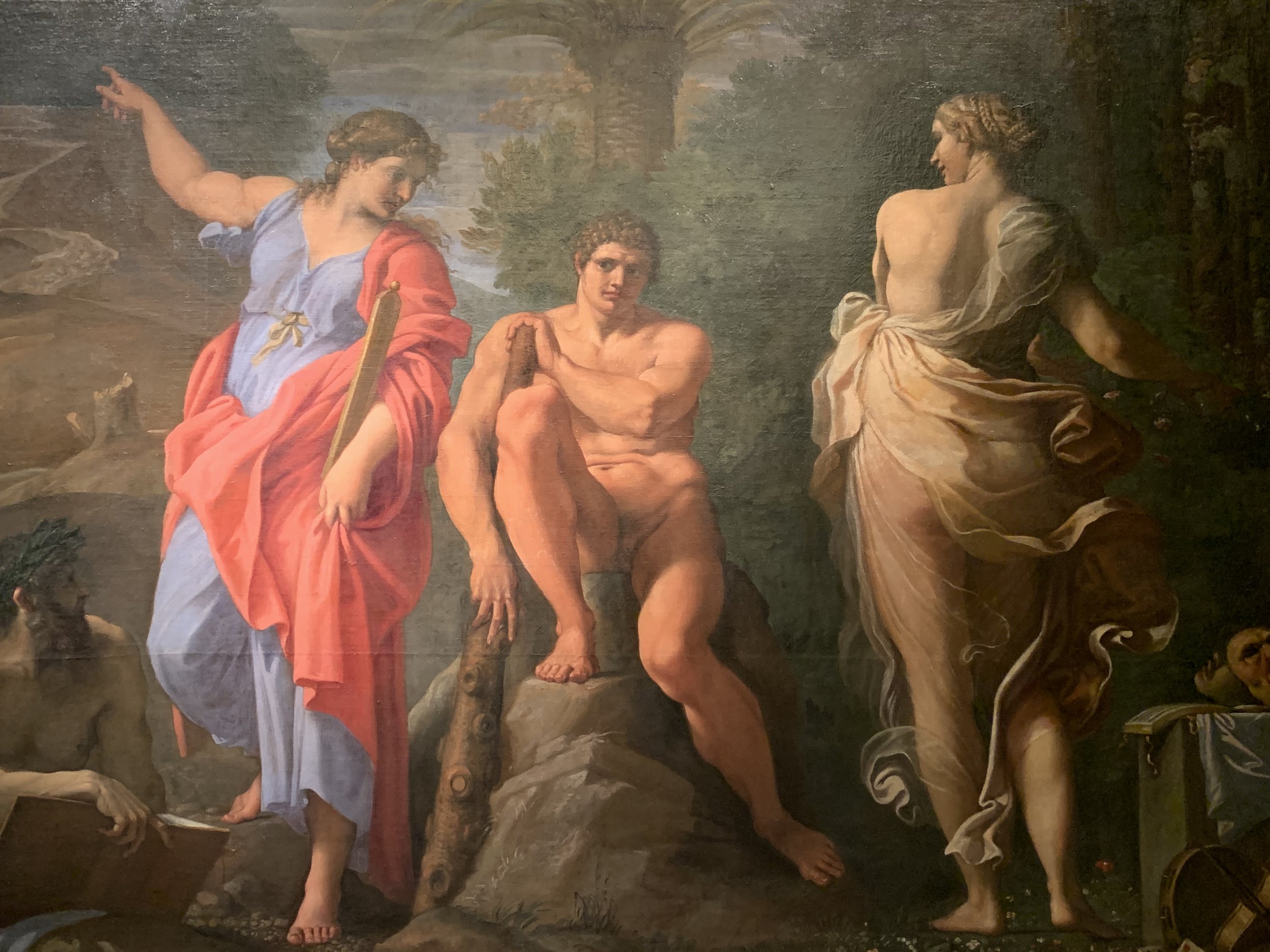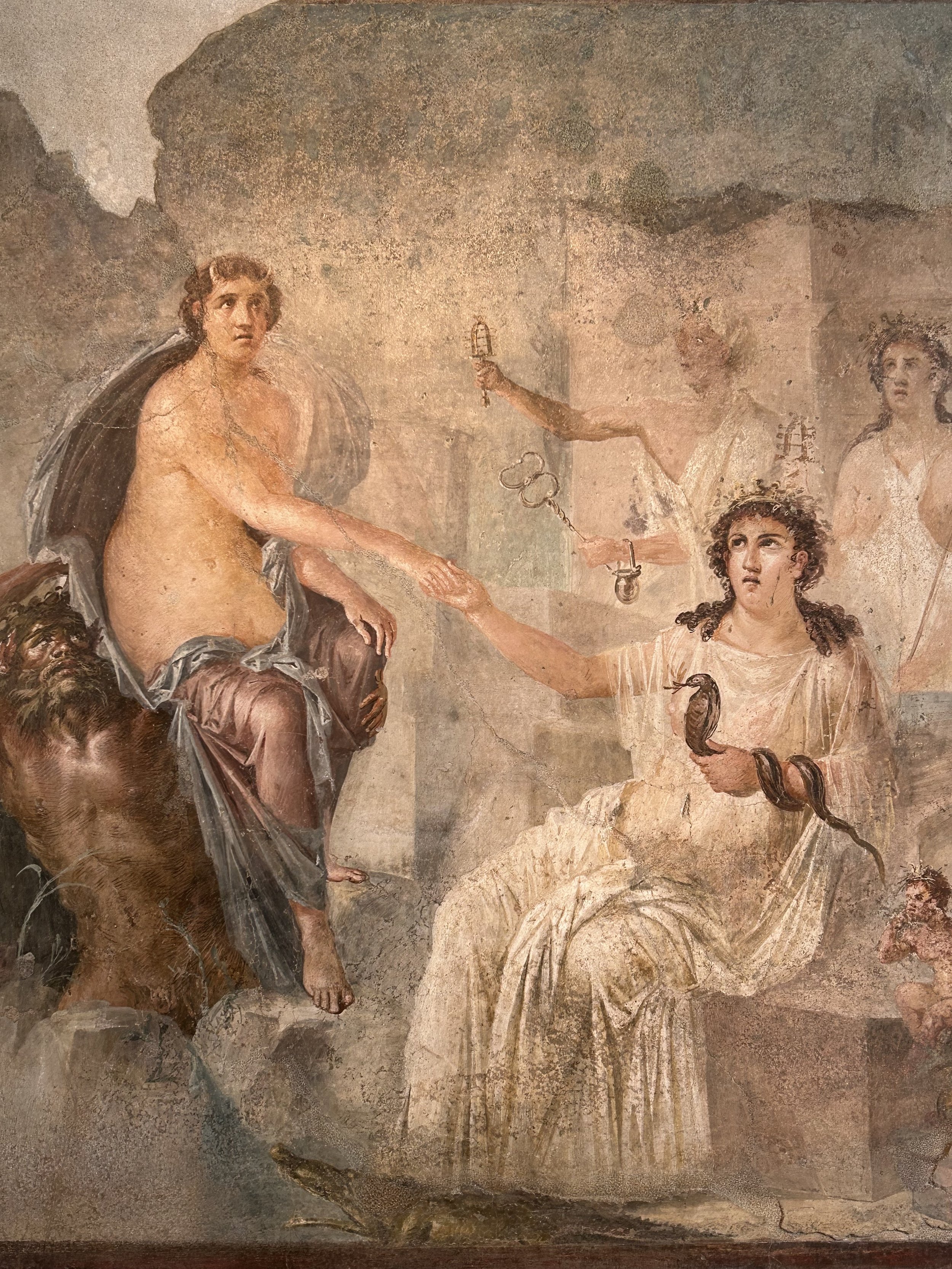Glorious Discoveries: Art, Archaeology & Opera in Naples
Date - Sunday 22 - Friday 27 March 2026
Lecturer - James Hill
Location - Naples, Italy
Price - £3250 per person (2 sharing a room)
Naples was Europe’s second largest city in the seventeenth century and a vital Mediterranean port in which the Habsburg Viceroys, the Neapolitan aristocracy, the clergy and the religious orders they belonged to all jostled for prestige. Their competing rivalries created a building boom, whilst artistic patronage spurred an array of artists to new artistic heights. From 1734, the Spanish House of Bourbon became Kings of Naples and continued to develop the city in grand late baroque and rococo styles, expressed in public buildings and royal residences erected in the city, the surrounding countryside and garlanding the bay forming the context to the ‘rediscovery’ of Pompeii and Herculaneum. We shall celebrate the city’s spectacular collections and creations in building, painting and sculpture, complimented with a day at Herculaneum and the Imperial villa at Oplontis. We shall also take our seats at Europe’s oldest opera house, the Teatro San Carlo for an evening of opera!
-
Comprehensive introduction to Naples
An evening of opera at the historic Teatro San Carlo, Europe’s oldest opera house
Visits to the Charterhouse of San Martino & the Bourbon Palace at Caserta
Explore Herculaneum, Oplontis & the amazing collections of antiquities at Naples’ Archaeological Museum
Enjoy masterpieces at the Capo di Monte picture gallery
Well-appointed 4* hotel on the famed Bay of Naples
Excellent food and wine throughout
Greek settlements were first established at the Bay of Naples in the eighth century BC. By the sixth century, Naples (named from the Greek neapolis, or new city) had been founded, eventually conquered by the Romans. In the medieval period it was absorbed into the Kingdom of Sicily by the Normans, with their political capital Palermo and their intellectual one Naples. From 1266, the kingdom’s capital settled on Naples and under the powerful patronage of the successive Houses of Anjou, Aragon and Habsburg, the flowering of the visual arts transformed the city, which from the sixteenth century was ruled by Habsburg viceroys, usually Spanish, for two hundred years.
Naples was the second largest city in Europe in the seventeenth century and a vital Mediterranean port in which the Habsburg Viceroys, the Neapolitan aristocracy, the clergy and the many religious orders jostled for prestige. Their competing rivalries created a building boom, while artistic patronage spurred an array of local artists including Jusepe de Ribera, Luca Giordano and Salvator Rosa to new artistic heights. Indeed, they were joined by ‘foreign’ artists including Caravaggio, Artemisia Gentileschi and Domenichino, all elevating the art of painting in Naples. This rise occurred in tandem with the art of Neapolitan cabinet making, sculpture and the decorative arts.
From 1734, the Spanish House of Bourbon also became Kings of Naples, continuing to develop the city in grand late Baroque and Rococo styles, expressed in public buildings and royal residences erected in the city, the surrounding countryside and garlanding the bay. This urban renewal formed the backdrop to the ‘rediscovery’ of Pompeii, Herculaneum and a host of other smaller sites sparking intense interest in the archaeology of the ancient world. Our visit to Herculaneum explores the public and the private of Roman daily life, whilst the more intimate villa at Oplontis offers a ravishing window into the world of sophisticated imperial Roman living. The potential of Naples was not lost on the diplomat and collector Sir William Hamilton, Britain’s resident ‘envoy extraordinaire’ to the Kingdom; indeed, Grand Tourists flocked south from Rome, collecting as they travelled, their ‘finds’ soon to enrich northern European collections.
We shall celebrate the city’s spectacular creations in building, painting and sculpture across the seventeenth and eighteenth centuries, complimented with a morning at the amazing collection of antiquities in the Naples Archaeological Museum and a day exploring the remarkable sites at nearby Herculaneum and Oplontis. Then there is the magnificent Royal Palace of Caserta, its sheer size a testament to the ambitions of King Charles IV and his architect Luigi Vanvitelli. Finally, we shall take our seats at Europe’s oldest opera house, the Teatro San Carlo for a production of Donizetti’s Lucia di Lammermoor – an opportunity too good to miss during a week of discoveries in Naples and around its bay.
We stay at the comfortable 4* Grand Hotel Santa Lucia, situated picturesquely on the shores of the Bay of Naples, overlooking the Castel del Ovo and its marina. Plenty of restaurants and bars can be found in the immediate vicinity whilst Piazza del Plebliscito and the opera house in the city’s historical centre are within comfortable walking distance.
-
Day 1: Sunday 22 March – We fly early in the morning from Heathrow with British Airways to Naples arriving at midday. We transfer by coach into the city centre to our hotel, the 4*Grand Hotel Santa Lucia. Following lunch (not included) and check-in, we shall walk into nearby Piazza del Plebliscito to admire its surrounding buildings by way of a short orientation walk after which there will be time to rest. In the early evening, we shall have our first group dinner overlooking the marina – wine, water and coffee are included with all group lunches and dinners.
Day 2: Monday 23 March – We spend today in the heart of the city exploring the art and architecture of Naples, focusing on a representative selection of churches and votive chapels in and around Spaccanapoli (the main artery of the city). All of the great Neapolitan artists of the High Renaissance and baroque periods are represented at Sant’Anna dei Lombardi, Il Gesu’ and San Gregorio Armeno whilst the Chapel of Sansevero is a marvel of Rococo sculpture. Following a group lunch, we shall visit the Chapel of San Januarius inthe city’s cathedral and the charitable brotherhood complex of Pio Monte della Misericordia to view Caravaggio’s influential canvas TheSeven Acts of Mercy. We return to the hotel. The evening will be free.
Day 3: Tuesday 24 March – Today we visit two sites just beyond the historical centre. We begin at the picture gallery at Capo di Monte. This former Bourbon hunting lodge and palace now displays the premier collection of Neapolitan paintings in Italy, together with the famed Farnese Collection brought to Naples via a royal marriage.We shall see paintings of ravishing quality by Raphael, Titian, Caravaggio and Annibale Carracci. We travel to the Vomero district for an early group lunch and in the afternoon visit the Certosa di San Martino. Charles of Anjou erected this monastic ‘charterhouse’ in 1325 on a high promontory overlooking the city. Our visit not only offers a sweeping panorama of Naples below but displays some very finely frescoed spaces from the baroque period and the history of the Kingdom of Naples via its small collection of paintings and objects. We return in good time to prepare for our evening (dinner not included) at the Teatro San Carlo and Donizetti’s Lucia di Lammermoor at 8.00 pm. Following the opera, we make our way back to the hotel the short distance on foot.
Day 4: Wednesday 25 March – This morning we make a leisurely start and travel the short distance to the spend the morning in the Naples Archaeological Museum,displaying an unrivalled collection of antiquities, including the most extraordinary finds from Herculaneum and Pompeii. There is also on display a second group of antiquities, ‘The Farnese Marbles’, originally excavated in Rome during the sixteenth century on behalf of Pope Paul III and his family and moved here in the eighteenth century. Lunch (not included) and the remainder of the day will be free for private explorations.
Day 5: Thursday 26 March – We travel the short distance around the Bay of Naples to visit the remarkable buried city of Herculaneum. This amazing discovery is a reminder of the awesome power of Vesuvius, unleashed when it exploded that fateful day, 24 August, AD 79. We shall explore the site at a gentle pace and after lunch close to the site (not included), continue the nearby Roman Villa at Oplontis, thought to be that of Nero’s second wife, Poppaea, famed for its opulent frescos, sophisticated living spaces and sheer sense of Imperial Roman luxury. We return to our hotel where later in the evening, we have our final group dinner in a highly regarded restaurant overlooking the Bay of Naples close to our hotel.
Day 6: Friday 27 March – We depart Naples and travel to the nearby town of Caserta to visit the Reggia di Caserta. This is the great country palace of the Bourbon dynasty begun by Charles IV, where the scale, the decoration and the surrounding landscape, all consciously emulate Versailles an aim completed during the reign of his successor, Ferdinand IV. Following an early final group lunch, we travel the short distance to Naples Airport and our afternoon return flight to Heathrow.
-
Price £3250 per person (2 sharing a room) No Flights £2990pp Deposit £550pp
Single Supplement £460 (Double for Sole Use)
Hotels
1 night (room only) Renaissance London Heathrow 21 March
5 nights with breakfast at 4* Grand Hotel Santa Lucia
Flights British Airways
Outward: BA534 Depart London Heathrow (Terminal 3) 0755 arrive Naples 1145
Return: BA535 Depart Naples 1640 arrive London Heathrow (Terminal 3) 1830
Price includes 2 dinners & 3 lunches with water, wine & coffee, all local transfers, entry fees & gratuities, the services of James Hill & our local guide. A stall seat opera ticket at the Teatro San Carlo on Day 3
Not included Travel to/from Heathrow, 3 dinners & 2 lunches











